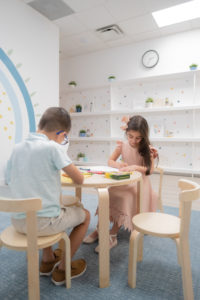
School based behavior interventions often look different. This is due to a variety of reasons. Often children’s behavior in the classroom is different than in home. Children are functioning in a different environment and often times have different demands than when they are in home. Interventions also have to be completed by school based personnel who have a variety of demands. This includes educating the students, keeping students safe, as well as meeting their social/emotional needs.
Behavior interventions in a classroom will vary from child to child and school to school. The purpose of this blog is to share some of the most commonly used behavior interventions in the school:
-
Token Economy
-
Token economies are either stickers, points, or another token that lead to rewards in the classroom. This is often seen as students earning a smiling face or points each day for a prize from the treasure box on Friday.
-
-
Check in/Check out
-
This is a system schools use for the student to check in with a staff member in the morning to remind them of their daily goals, and check out in the afternoon, giving the student daily feedback on their behavior. More about this can be found here.
-
-
Class Dojo
-
This is a point system some schools use to have give points to their students for desired behaviors and deduct points for behaviors they consider unproductive. This again shows students what behaviors earn points, and which behaviors are not appropriate in the classroom. More about Class Dojo can found here.
-
-
Behavior Chart
-
This can be a simple chart with behaviors specific to your child. This usually identifies the targeted goals and whether they were met or not. This allows the child to see the expectations and how to meet them.
-
Key points to school based behavioral interventions:
-
Keep behavior goals few (three or less) so the student understands what they should do in the school setting.
-
Keep data or documentation to see if the intervention is working or not working.
-
Review the data to know if changes need to be made.
-
Communicate between home and school to stay on the same page. This allows the parent to share what works at home and praise their child for their success.
School based interventions work best when home and school work together.
If you are having difficulty or would like additional ideas, please reach out via email to FLAdmin@riseservicesinc.org or visit our website at for resources and information.
Dr. Karen Hans, BCBA
Board Certified Behavior Analyst
